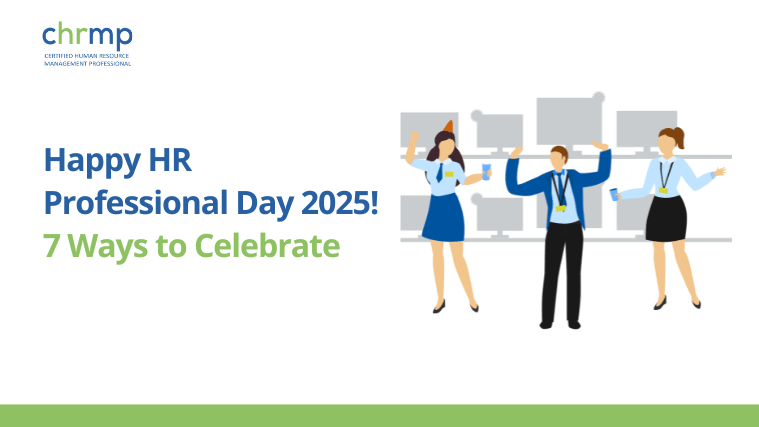
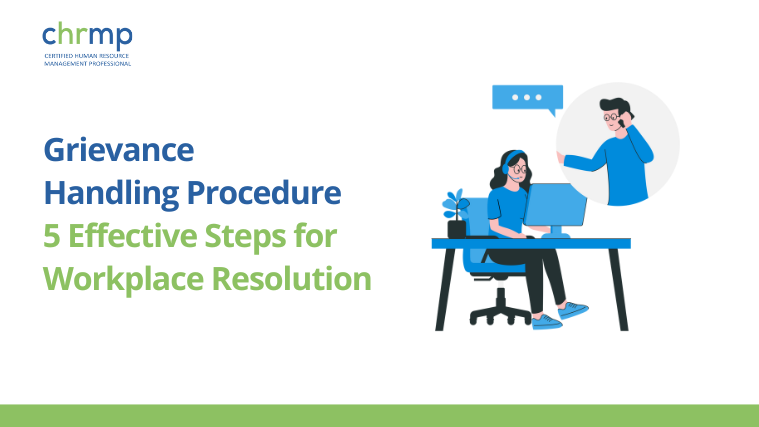
Have you ever noticed that employees often hesitate to voice their concerns or raise employee grievances? According to a 2019 Gallup study, only 30% of employees strongly agree that their opinions count at work. When people believe their problems don’t matter, they’re more likely to stay silent—even when real issues need attention. Implementing a robust Grievance Handling Procedure ensures that employee concerns are addressed effectively, fostering trust and encouraging open communication in the workplace.
This is where a well-structured grievance handling process comes into play. By effectively addressing employee grievances, you send a clear message that every concern is taken seriously and handled with respect. A solid framework for workplace resolution ensures that concerns about working conditions, interpersonal conflicts, or unclear policies are dealt with consistently, transparently, and fairly. When done right, grievance handling doesn’t just fix isolated problems—it also helps nurture a healthier, more engaged workforce.
Ultimately, a positive and respectful work environment is the foundation of long-term success. By putting a comprehensive grievance handling system in place, you’re not just solving immediate issues—you’re strengthening communication, reinforcing trust, and laying the groundwork for a more engaged, resilient, and high-performing team.
A grievance procedure is a structured framework designed to guide grievance management within an organization. More than just a policy, it’s a clear roadmap defining how employee complaints are identified, recorded, investigated, and resolved. By outlining each step, a grievance procedure sets shared expectations for everyone involved—employees, managers, HR, and senior leaders—ensuring that every concern is handled consistently and without bias.
At its core, a grievance procedure spells out a step-by-step approach for employees to raise issues and for the organization to respond. It usually involves formal channels (like talking to HR or using an online portal) and timelines for acknowledging, investigating, and resolving concerns. It also clarifies who can file a grievance, what types of issues qualify, and how the process works if multiple grievances pop up at once. By doing so, it ensures every employee understands their rights and knows exactly how to seek redress.
Its scope covers a wide range of workplace matters:
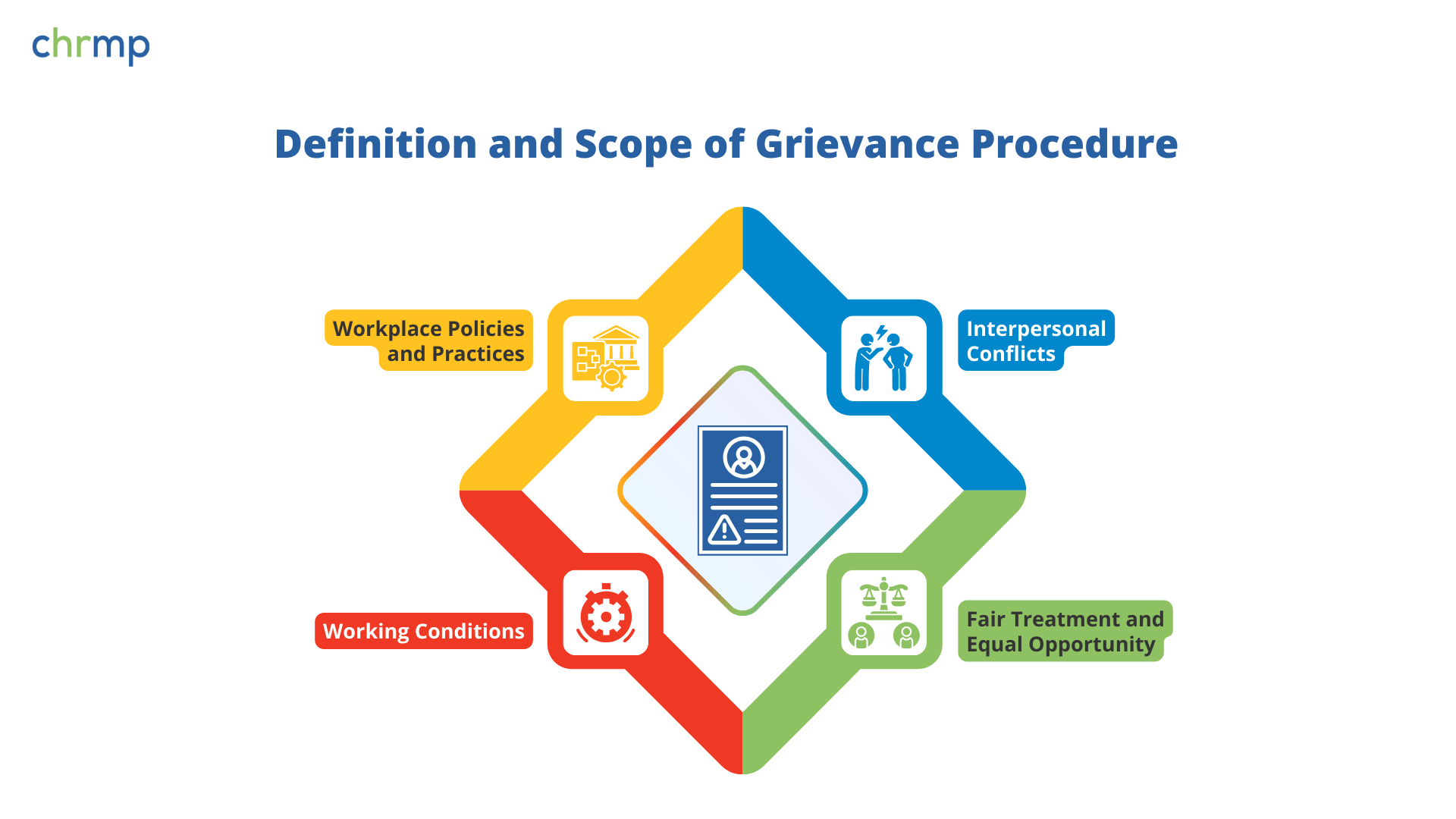
By covering these varied issues, the grievance procedure ensures every concern is routed into a fair, thorough, and respectful process—eliminating guesswork and preventing grievances from slipping through the cracks.
A robust grievance process often includes:
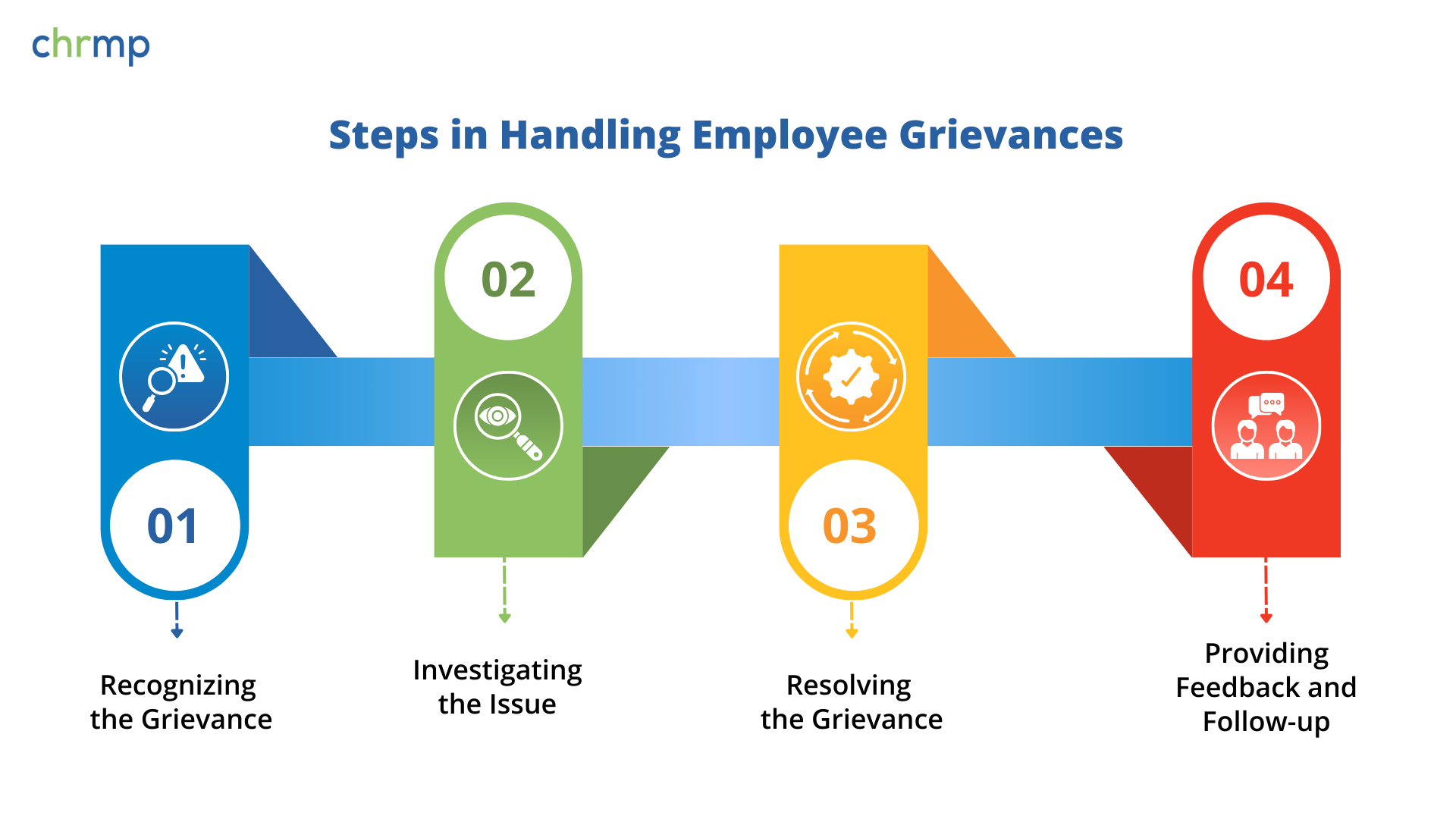
A well-structured grievance resolution process usually follows certain grievance steps. Imagine an employee who feels they’re always given heavier workloads than their peers:
Step 1: Recognizing the Grievance: The employee reports the issue—maybe to HR or a manager. The organization acknowledges it and promises to look into it, setting a tone of fairness and transparency right from the start.
Step 2: Investigating the Issue: HR checks workload records, reviews project assignments, and speaks to supervisors and team members. No conclusions are made until the facts are clear. If evidence confirms an imbalance, the grievance is validated.
Step 3: Resolving the Grievance: With the problem confirmed, the company finds a fair fix—maybe redistributing tasks, clarifying roles, or offering additional support. The solution is clearly explained so the employee knows what’s changing.
Step 4: Providing Feedback and Follow-up: It doesn’t end once the solution is implemented. HR or a manager checks in after a few weeks to see if the changes are effective. This follow-up shows a commitment to continuous improvement and reassures employees that their voices truly matter.
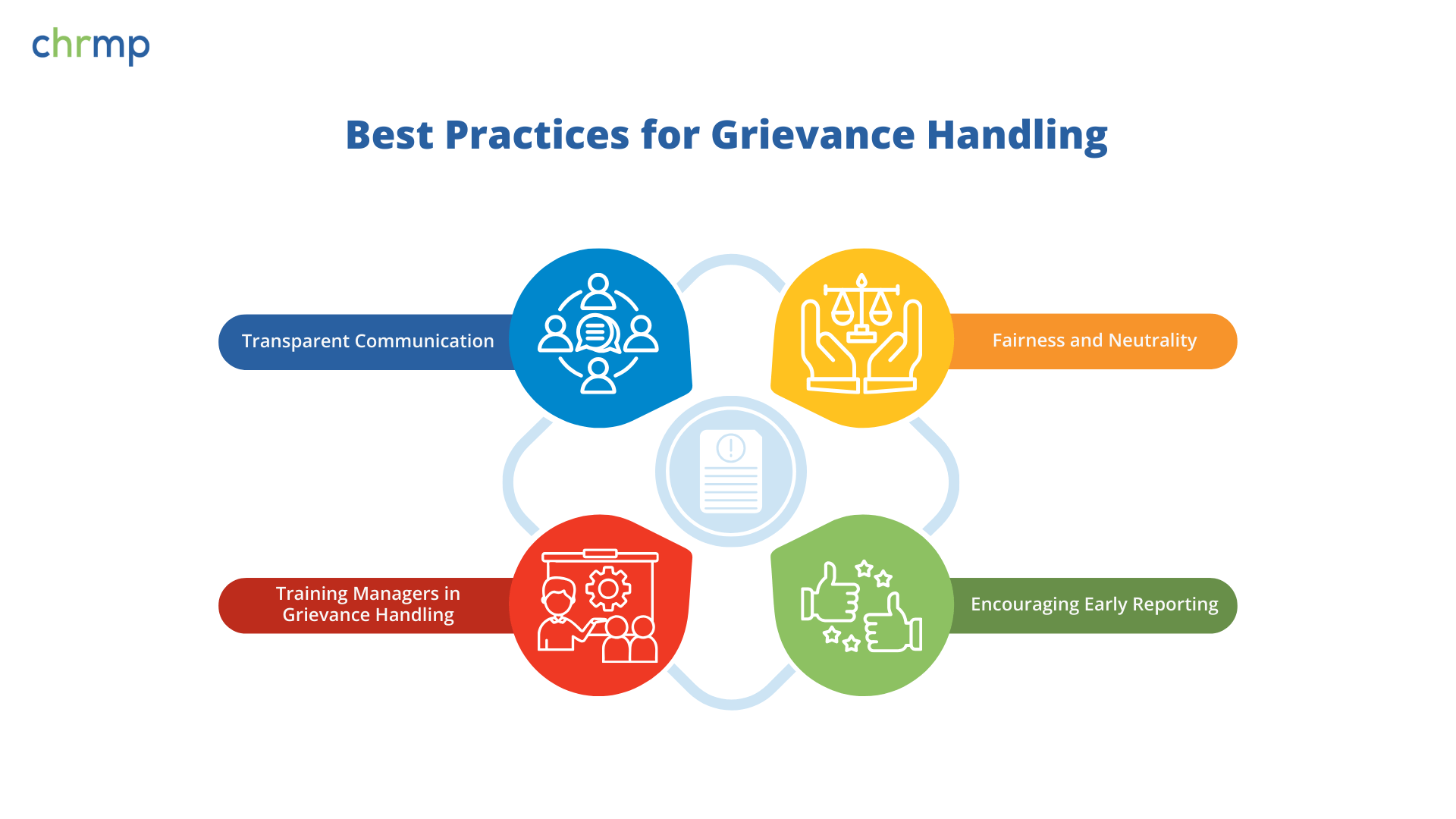
Beyond the basics, certain best practices elevate how conflicts are resolved and how HR communicates. Let’s consider some practical examples to see these practices in action:
By using these best practices daily, organizations build credibility, show empathy, and create a place where employees feel comfortable raising their voices.
Understanding grievance laws, protecting employee rights, and ensuring a fair process are essential. Mishandling grievances can cause legal trouble, financial penalties, and damage to your company’s reputation.
Understanding Legal Obligations
Grievance handling must fit local laws. In the United Kingdom, employees can have a union rep or colleague at a formal hearing. In Germany, works councils must be involved as required by the Works Constitution Act. India’s Industrial Disputes Act might mean some cases go to conciliation officers or labor courts. In the United States, laws like the National Labor Relations Act and Title VII influence how union and discrimination-related grievances are handled.
Ensuring Compliance with Labor Laws
Laws change, so grievance policies need regular reviews and updates. In France, internal regulations must detail complaint procedures, adapting as legislation evolves. The Australian Fair Work Act might introduce stricter deadlines or new protections, calling for policy revisions. In Canada (Quebec), human rights and labor laws could demand specific documentation or notification steps, especially for discrimination or harassment cases, requiring ongoing refinements.
Modern tools—like HR software and grievance tracking systems—streamline the process. Technology cuts down on admin work, improves consistency, and offers insights for continuous improvement.
Digital Solutions for Grievance Handling: Online portals and apps allow confidential submissions and real-time tracking. Automated reminders help keep investigations on track, and centralized records make it easy to review cases later for audits or learning.
HRIS and Employee Feedback Systems: Integrating grievance procedures into a Human Resource Information System (HRIS) centralizes data, making it easier to spot patterns. If several employees raise the same issue—like limited career growth—HR can identify a systemic problem. Regular surveys and focus groups help catch issues early, allowing proactive fixes instead of reactive ones.
A robust grievance handling procedure does more than patch up problems—it bolsters your entire work culture. When employees feel heard, respected, and treated fairly, trust grows and engagement soars. Responding to concerns promptly not only keeps morale high and boosts productivity but also improves retention rates.
So, are you ready to transform your workplace into one where every voice is valued and concerns are addressed with care? By taking proactive steps, you won’t just solve problems as they pop up—you’ll cultivate a more engaged, trusting, and resilient organization where everyone thrives.
Start with a clear grievance procedure: encourage reporting, investigate thoroughly, offer fair resolutions, and follow up to ensure the solution works. At every stage, use transparency, fairness, and respect to make employees feel genuinely heard.
Typically:
They usually match the five steps above. You acknowledge the complaint, gather facts, implement a fair solution, communicate clearly, and then check back to confirm it’s working.
Collect all relevant data, consider everyone’s viewpoint, apply policies consistently, and suggest a fair remedy. Explain your decision clearly, and be open to changes if follow-ups show more adjustments are needed.
An employee grievance is a formal, documented issue tackled through a defined process. A complaint might be informal and doesn’t always follow a set procedure. Grievances ensure a full, fair review.
Common triggers include unfair treatment, inconsistent policies, poor communication, limited career growth, and conflicts with managers or peers. Identifying and fixing these root problems prevents repeat issues.
Train them in active listening, proper documentation, conflict resolution, and empathy. Role-plays, workshops, and HR-guided coaching make them more effective at handling grievances calmly and fairly.
HR must keep details confidential, limit disclosure to those who need to know, store records securely, and follow privacy laws. Protecting sensitive information encourages employees to speak up without fear.
Address issues early. Promptly encouraging employees to voice concerns, offering mediation when needed, and tackling problems before they fester maintain harmony and productivity.
Follow labor laws, avoid discrimination, provide fair representation, keep records, and seek legal advice if needed. Compliance shields both the company and its employees.
Regular surveys, suggestion boxes, and focus groups help uncover recurring issues. Adjusting policies, improving communication, or adding training based on this feedback makes the system more responsive and trusted.

© 2007-2025 CHRMP| All Rights Reserved | Powered by Ripples Learning & Research Private Limited
